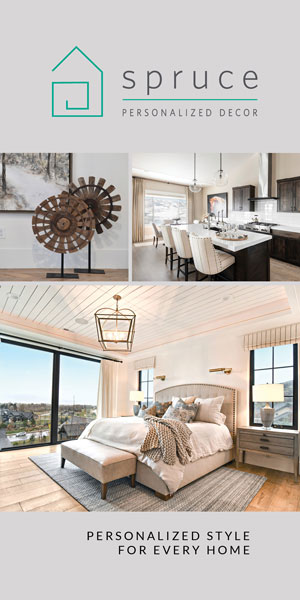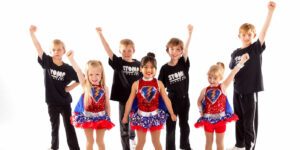Dave Brewer is a tattoo artist from a different time. Listening to him talk about tattooing is like listening to any serious artist – he’s passionate about his craft and works hard to create in a way that honors its origins.
For the Brewers, tattooing is a family business.
Born in Whittier, Calif., Dave Brewer began tattooing in 1991, and in 1996, he opened Trigger Happy Tattoo in nearby La Habra. In those early days, Brewer took his young son, Dalton, to work with him every day after kindergarten. Dalton went on to study fine art in college and then apprenticed at the shop before moving to Humboldt County in Northern California to continue on in his career.
“It is cool, seeing him evolve as an artist and tattooer,” Brewer says. “I’m stoked that he is a second-generation tattoo artist, but I also think he prefers not to work in the shop I opened. I think he prefers to be known as himself and not somebody’s son.”
Drawn by the quality of life on the Wasatch Back, Brewer came to the Heber Valley a few years ago with his wife, Jennifer, and teenaged children, Kailey and Cade. Brewer’s daughter will start at Utah Valley University next semester and also has her eye on fine art as a field of study. The artistic temperament is a dominant trait, it seems.
A Little Art History
It’s clear from talking with Brewer that his style and point of view are greatly informed by the history of tattooing in Southern California. “Tattooing really hit the mainstream once there were tattoo shows on TV,” he explains. “A kid that was artistic when he was 10 would see those shows and think ‘that’s what I want to do when I grow up.’”
But before Miami Ink, black and gray tattooing came of age in East Los Angeles.
“The style of black and gray evolved from the prison system in the 70s — because the inmates didn’t have colored ink,” says Brewer.
Tattooland was a shop in East LA that brought the style out of the joint and into the mainstream. Artists like Good Time Charlie, Jack Rudy and Mark Mahoney were creating work styled by hard time for anyone who wanted it — without a stay behind bars. “Tattooland was the shop that really made that style commercially available,” explains Brewer.
Around this time, the National Tattoo Convention was held once a year, and to be a part of the association you had to be invited and sponsored by a more established member. This helped legitimize the trade and made black and gray a recognized style of tattooing. “That was really the beginning of art coming into the profession of tattooing,” Brewer says. “The technique and the art have evolved so much, but it all started there.”
The Old and The New
There’s a sense of nostalgia in speaking with Brewer. The internet and social media have made celebrities of relatively young tattoo artists and the broad availability of other artists’ designs has changed the way tattoo artists create. But Brewer is still pretty old school.
“It used to be that customers would come in and look at the books to see what an artist can do,” he reminisces. Customers would pore over pages of designs and ask for something similar, or take parts from those designs to create something familiar for the artist but still their own. Today, a client can bring in a picture of Adam Levine’s forearm and say “I want this tattoo.”
But of course, it’s not so simple.
Tattoo artists work with the skin, muscles and underlying bones of every client — a new canvas for every piece — and a great tattoo is designed for the body it’s going onto. Of course, not every tattoo will work for every body, and so the phenomenon of imitation has also created a need for tattoo artists to learn how to modify designs for the canvas in front of them.
New technology has challenged artists to hold onto their voices, for sure, but there’s also a lot of good happening. Sacred geometry can be created more quickly than ever with design software, and the ability to composite images onto a photo of the client using Photoshop has created confidence in artists and clients alike, as each tattoo can be more finely tuned before needle hits flesh.
Talent + Inspiration = Friendship
Brewer went to California State University Long Beach out of high school and got a degree in psychology. And even though he didn’t have the perennial art school experience, he speaks with the voice of a lifelong student of art. He explains that the experience of critique — an art-school process wherein students share their work with one another and get feedback — is a crucial part of growing.
“A good tattoo shop creates a community of creative development,” says Brewer. “Each artist provides feedback on the work and helps the younger artists grow.” Brewer sought to run his shop in California as this type of creative enterprise, and believes that his work, as well as his son’s, are all the better for it.
And his talent is obvious.
The work demonstrates his 27 years of technical development with an evident nod to the past. It’s also clear that Brewer knows how to give clients the work they want. His approach to design seems to bring the best of his experience to bear for each client’s (often difficult-to-express) desires.
“It’s more than a client/artist relationship, it’s a friendship,” Brewer asserts. “And if you’ve tattooed a person for a long time, there’s a lot invested in that relationship, and it’s part of the art.” While he’s busy in Heber tattooing clients from all over Utah, he still makes time to visit his shop in La Habra on occasion to see his clients with whom he shares this kind of abiding friendship.
Indeed, a tattoo is unlike any other purchased work of art. Each piece represents a more lasting and personal connection to the buyer. Brewer honors this truth. And it is clear that while he brings technical skill and great knowledge to each piece, the most important quality he brings to his work is love.
The Heber iteration of Trigger Happy Tattoo is an appointment-only shop located in Old Town Heber. To make an appointment, contact Dave Brewer at 435-315-6232 or at [email protected].





